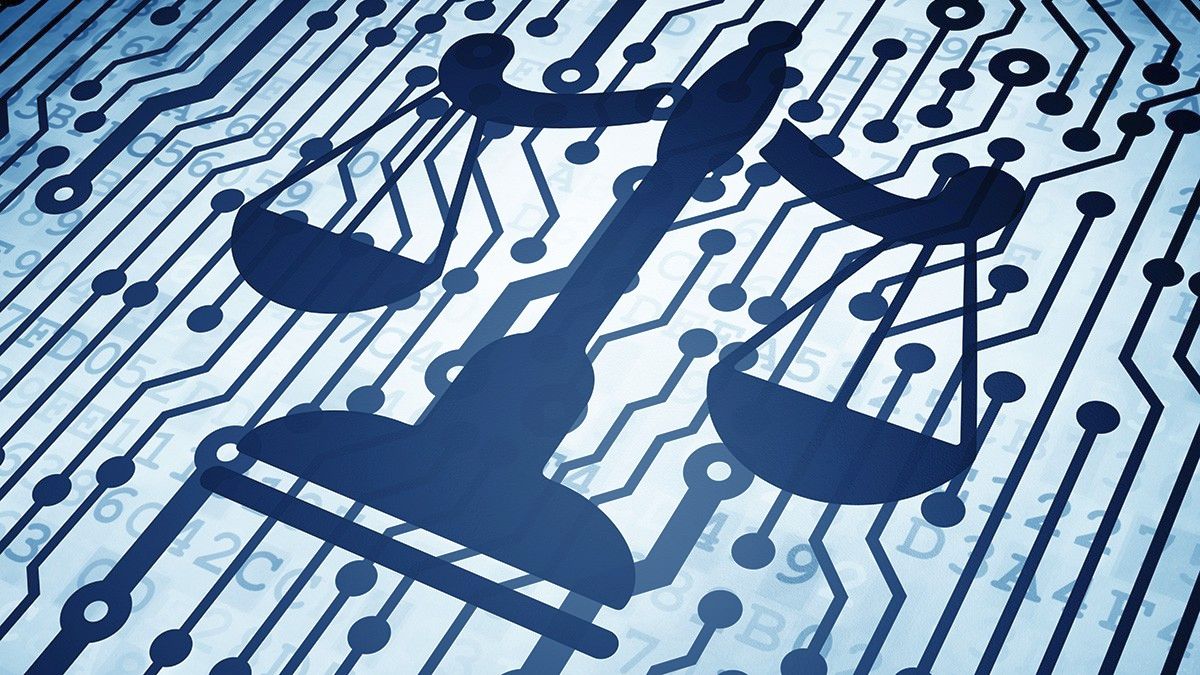In recent times, the realm of jurisprudence has witnessed a transformative shift, where conventional methodologies are increasingly complemented by cutting-edge advancements. This evolution signifies a significant change in how professionals engage with their responsibilities, reshaping workflows and enhancing efficiency. The fusion of traditional practices with advanced solutions marks a pivotal moment, enabling a more dynamic approach to addressing client needs and navigating complex regulations.
As the landscape evolves, practitioners are harnessing a variety of tools and resources to streamline operations and improve outcomes. The introduction of sophisticated systems facilitates seamless communication, enhances research capabilities, and supports data management. Such advancements not only empower professionals to provide superior service but also foster a collaborative environment where innovation thrives.
The integration of modern solutions is not merely an option but a necessary stride towards remaining competitive and responsive in an ever-changing environment. As this paradigm continues to unfold, the significance of adaptability and forward-thinking cannot be overstated. Embracing these changes ensures that practitioners are better equipped to tackle contemporary challenges and, ultimately, serve their clients with greater effectiveness and insight.
Impact of AI on Legal Workflows
The integration of artificial intelligence in professional settings is transforming traditional processes, enhancing efficiency and productivity in various sectors. Specifically, in the realm of jurisprudence, this development is facilitating smoother operations and improved service delivery by automating repetitive tasks and streamlining complex procedures.
Automation of Routine Tasks
AI-driven tools are adept at handling a multitude of repetitive activities, such as document review, contract analysis, and case research. By employing machine learning algorithms, these systems can quickly analyze vast amounts of data, allowing practitioners to allocate their time and resources more effectively. This not only speeds up workflows but also reduces the likelihood of human error, leading to more accurate outcomes and increased consistency in decision-making.
Enhanced Decision-Making and Insights
With the capability to process and evaluate significant datasets, artificial intelligence offers legal professionals valuable insights that can inform strategic decisions. Through predictive analytics, practitioners can assess potential outcomes, enabling them to devise more effective strategies tailored to their clients’ needs. This data-driven approach reduces uncertainty and empowers individuals to make informed choices, ultimately fostering a more proactive practice.
Modern Tools Reshaping Legal Research
In the evolving landscape of professional services, a significant shift is underway. Innovative solutions are revolutionizing how practitioners access and analyze information, drastically improving efficiency and accuracy. This transformation not only streamlines workflows but also enhances the overall quality of outcomes in various fields.
Key Innovations in Information Access
Numerous advancements have emerged, enabling experts to locate relevant data swiftly. Some notable tools include:
- Cloud-based databases offering extensive repositories of case law and regulations.
- AI-driven platforms that provide predictive analysis and relevant case suggestions.
- Cross-referencing tools that allow seamless navigation through complex documents.
These modern instruments facilitate an unprecedented level of accessibility, breaking down traditional barriers to information retrieval.
Impact on Research Efficiency
The introduction of advanced applications has significantly influenced research processes. The benefits include:
- Reduced time spent sifting through volumes of text.
- Improved accuracy in identifying pertinent legal precedents.
- Enhanced collaboration through shared digital workspaces.
By integrating these innovations into regular workflows, professionals are better equipped to deliver timely and well-informed solutions to their clients, ultimately setting a higher standard in the industry.
Enhancing Client Communication Through Tech
Effective interaction between professionals and their clients has entered a transformative phase. With the rise of innovative tools, the dynamics of communication have improved significantly, allowing for more meaningful connections and streamlined exchanges. These advancements enable practitioners to meet client needs more promptly and efficiently, fostering a sense of trust and collaboration.
Building Stronger Connections
The incorporation of advanced solutions facilitates the creation of more personalized experiences. Real-time messaging apps and video conferencing platforms allow clients to engage directly, gaining immediate responses to their inquiries. This immediacy not only enhances satisfaction but also cultivates a rapport that is essential in today’s fast-paced environment.
Improving Accessibility and Responsiveness
Furthermore, digital tools ensure that services remain accessible at all times. Automated systems can provide clients with updates and notifications, reducing uncertainty and enhancing overall engagement. By leveraging these innovative methods, professionals can demonstrate their commitment to being available and responsive, ultimately leading to stronger client loyalty and retention.
Cybersecurity Considerations for Law Firms
In an era where digital operations are integral to professional services, safeguarding sensitive information has become paramount. Organizations, especially those managing confidential client data, must prioritize protective measures to mitigate risks associated with cyberspace vulnerabilities.
Understanding the potential threats is crucial. Some common cyber risks include:
- Phishing attacks aimed at extracting sensitive information
- Malware designed to disrupt operations or steal data
- Ransomware incidents that can cripple access to essential files
- Data breaches resulting from insufficient security protocols
Implementing a robust security framework involves several strategic steps:
- Risk Assessment: Conduct regular evaluations to identify vulnerabilities within the organization.
- Employee Training: Provide ongoing education to ensure staff recognize and respond to potential threats effectively.
- Multi-Factor Authentication: Enforce layered login processes to enhance access control.
- Secure Communication: Use encrypted channels for sharing confidential information.
- Incident Response Plan: Develop and regularly update a response strategy for addressing cyber incidents.
Staying compliant with industry regulations is also essential, as many jurisdictions impose strict criteria regarding data protection. Ensuring adherence not only protects clients but also fortifies the enterprise’s reputation.
Ultimately, fostering a culture of cybersecurity awareness and vigilance will help fortify defenses and ensure that sensitive information remains protected against evolving cyber threats.
Data Analytics in Case Management
In the modern landscape, the integration of advanced analytical methods plays a crucial role in streamlining case-handling procedures. By leveraging insights from vast amounts of information, professionals can enhance their decision-making capabilities and improve outcomes. This innovative approach enables practitioners to pinpoint trends, identify risks, and allocate resources more effectively.
Data analytics serves as a powerful tool to examine past cases, allowing practitioners to draw valuable lessons and refine their strategies. By systematically analyzing data points, such as case duration, outcomes, and resource allocation, individuals can enhance their case management practices significantly. This not only aids in forecasting potential challenges but also fosters a proactive stance in legal proceedings.
Furthermore, the application of predictive analytics can transform case management into a more strategic endeavor. By utilizing algorithms to analyze historical data, professionals can anticipate future developments and tailor their approaches accordingly. The ability to foresee possible outcomes empowers teams to devise more effective plans, ultimately leading to better results for clients.
As data continues to expand in volume and complexity, the importance of employing robust analytics becomes increasingly apparent. By embracing data-driven methodologies, practitioners can cultivate a more efficient workflow, improve their client service, and stay ahead in a competitive environment. This evolution represents a significant shift towards maximizing the potential of information, resulting in enhanced case resolutions and overall effectiveness.
Future Trends in Legal Technology Adoption
The landscape of professional services is evolving, propelled by a wave of innovative solutions that reshape how practitioners operate. As these advancements gain momentum, they present opportunities for enhancing efficiency, streamlining workflows, and improving client interactions. The upcoming trends are set to redefine traditional approaches, leading to a more responsive and adaptive environment.
AI and Automation in Service Delivery
Artificial intelligence and automation are becoming integral components of service delivery. These tools not only reduce repetitive tasks but also provide valuable insights through data analysis. Institutions are increasingly adopting smart systems capable of predicting outcomes based on previous data, allowing practitioners to make informed decisions swiftly.
Cloud-Based Solutions for Enhanced Collaboration
Cloud technology offers unparalleled opportunities for collaboration among professionals. As remote work becomes commonplace, secure and accessible platforms enable seamless communication and document sharing. This shift not only improves productivity but also fosters a culture of transparency and cooperation within teams.
Q&A: Technology in Law is the new norm
How has technology changed the daily operations of law firms?
Technology has significantly transformed the daily operations of law firms by streamlining processes and enhancing efficiency. Many firms now utilize case management software to organize client information, track deadlines, and manage documents more effectively. Additionally, digital communication platforms enable better collaboration within legal teams and with clients. Moreover, the use of artificial intelligence (AI) in legal research helps lawyers quickly access relevant case laws and precedents, ultimately saving time and reducing costs. Overall, the integration of technology into law practices has created a more agile and responsive legal environment.
What are the main tools and technologies that legal professionals should adopt?
Legal professionals should consider adopting various tools and technologies to enhance their practice. Key tools include case management systems that help in organizing and tracking cases efficiently, e-discovery software for managing digital evidence, and document automation solutions that streamline the drafting of legal documents. Additionally, implementing secure cloud storage ensures that sensitive client information is protected while allowing easy access for authorized users. Legal research databases powered by AI can assist lawyers in finding pertinent information quickly. Overall, embracing these technologies can lead to greater productivity and improved service delivery.
What challenges do law firms face when integrating technology?
While integrating technology into law firms presents numerous advantages, there are also several challenges that firms may encounter. Resistance to change is one of the most significant hurdles, as some legal professionals may be accustomed to traditional practices and hesitant to adopt new tools. Additionally, the cost of implementing and maintaining technology solutions can be substantial, especially for smaller firms. There are also concerns regarding data security and compliance with legal regulations when adopting new technologies. To overcome these challenges, firms need to invest in proper training and develop a clear technology strategy that aligns with their overall business goals.
How can technology improve client law services?
Technology can greatly enhance the quality of legal services provided to clients by increasing accessibility, improving communication, and ensuring transparency. For instance, client portals allow clients to access case updates and documents at any time, fostering a stronger client-lawyer relationship. Chatbots powered by AI can provide instant responses to client inquiries, improving overall communication. Additionally, technology can facilitate online consultations, expanding the geographical reach of law firms and making it easier for clients to seek legal assistance. By leveraging these advancements, law firms can better meet client expectations and improve satisfaction levels.
What is the future of technology in the legal profession?
The future of technology in the legal profession appears promising, with ongoing advancements in AI, machine learning, and blockchain technology anticipated to transform the landscape further. AI-powered tools will continue to enhance legal research and automate various administrative tasks, allowing lawyers to focus on more complex and strategic aspects of their work. Blockchain technology may revolutionize transaction processes, enabling secure and transparent record-keeping. Moreover, the rise of virtual law firms and remote work, fueled by technology, will likely redefine traditional legal practices, creating more flexible and client-centric models. As these trends evolve, it is essential for legal professionals to stay informed and adaptable to remain competitive in the market.
What are the key benefits of integrating technology into legal practices?
Integrating technology into legal practices offers several significant benefits. First, it enhances efficiency by automating routine tasks, which allows lawyers to focus on more complex aspects of their work. For example, software can streamline document management and billing processes, reducing the time spent on administrative duties. Second, technology improves access to information. Legal research databases and online resources provide lawyers with instant access to a wealth of information, thereby enabling them to make informed decisions more quickly. Third, technology fosters better communication and collaboration, not only within law firms but also with clients. Tools like secure communication platforms and client portals facilitate seamless interaction, ensuring that clients remain informed and engaged throughout legal proceedings. Additionally, embracing technology can lead to cost savings for both firms and clients, as it often reduces operational costs and can even lower fees. Ultimately, the integration of technology in legal practices is not just a trend, but a transformative approach that can drive innovation and improve the quality of legal services delivered.
How is legal tech transforming the practice of law?
Legal tech is transforming the practice of law by providing tools and solutions that improve efficiency, accuracy, and accessibility. Technology like AI-powered legal research tools and practice management software allows lawyers to automate routine legal tasks, streamline document management, and better manage their workload. As legal technology solutions continue to evolve, they are reshaping how legal services are delivered and making it easier for law firms to provide high-quality service to clients while reducing costs.
What are some key legal tech solutions helping law firms today?
Some key legal tech solutions helping law firms today include case law research tools, practice management software, and document automation systems. These tools allow legal practitioners to conduct legal research more efficiently, manage client cases, and draft documents with fewer errors. Additionally, technology tools like e-discovery platforms and contract management software help law firms manage large amounts of data and improve client communication, ensuring better outcomes for legal departments and law firms.
How are law firms benefiting from the use of legal technology?
Law firms are benefiting from the use of legal technology by increasing efficiency, reducing costs, and improving client service. By leveraging tools like legal tech solutions for document management and AI-powered analytics, firms can automate repetitive legal tasks, freeing up time for lawyers to focus on complex legal work. Technology also allows law firms to stay competitive by delivering legal services faster and more accurately, meeting the growing demands of clients while maintaining high standards of practice.
What are the current trends in legal technology, and how are they shaping the future of law?
Current trends in legal technology include the growing use of AI, automation, and cloud-based solutions. These technologies are reshaping the future of law by enabling legal professionals to handle more cases with less effort, improving the overall efficiency of the legal sector. As legal tech tools become mainstream in the legal profession, law firms and legal departments are increasingly relying on technology for case management, legal research, and client communication, marking a significant shift in how legal services are provided.
How is the emergence of new legal tech impacting the legal landscape?
The emergence of new legal tech is impacting the legal landscape by making legal processes more streamlined, reducing the time spent on routine legal tasks, and improving access to justice. Innovations such as AI-powered legal research tools, e-discovery software, and contract management platforms are transforming how legal practitioners approach their work. The legal field is increasingly adopting these technologies, leading to a more tech-savvy legal workforce and a fundamental shift in how law firms and legal departments operate in the modern legal system.



